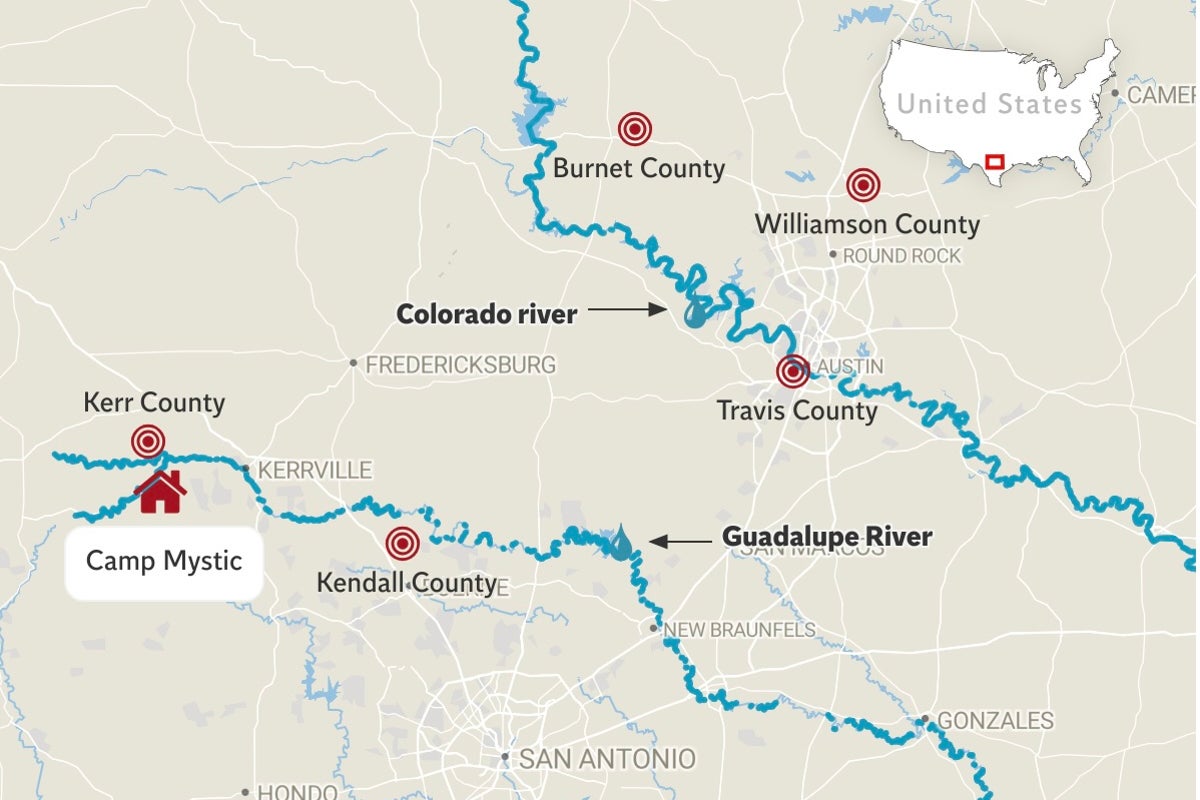A week after catastrophic flash floods swept through Central Texas, first responders are still sifting through debris to find the missing and recover the dead.
At least 129 people, including 36 children, have been killed following torrential downpours that began Thursday (July 3), causing the Guadalupe River to burst its banks in the early hours of July 4, rising by 20 feet in roughly 95 minutes. At least a further 160 remain missing, with officials fearing the death toll could soar.
Twenty-seven young girls and staff members were killed at Camp Mystic, an all-girls Christian summer camp situated on the bank of the Guadalupe River.
Maps reveal the devastation seen in Kerr County, where authorities revealed 36 children were among the 103 victims in the flood-ravaged county.
By Friday, at least 161 people were missing in the county alone, with no rescues made there since then. “There could be more added to that list,” Texas Governor Greg Abbott said earlier this week.
Authorities said at least eight people were killed in Kendall County, nine in Travis County, five in Burnett County, three in Williamson County, and one in Tom Green County.
In the confusion after such a disaster, it is sometimes difficult to ascertain who is missing, though either way, many more are feared dead.
President Donald Trump and First Lady Melania visited the town of Kerrville on Friday to survey the damage and meet with local officials and first responders.
The president said it was one of the worst disasters he had seen, referring to the impacts of hurricanes and tornados in his first term.
In Kerr County, first responders were forced to navigate uprooted trees, swept-away buildings, and large piles of debris during their operations. There were also power outages thanks to 40 downed power lines, officials said.
Five girls from Camp Mystic and one counselor remained missing on Wednesday evening. The camp reported that the floods had killed 27 campers and staff members.
“That’s every parent’s nightmare,” Texas Senator Ted Cruz told reporters.
Responding to a question about an emergency warning system, Cruz said Monday there had always been a risk of flooding along the river and that everyone would evacuate if they could go back in time.
“Evacuation is a delicate balance,” said Kerrville City Manager Dalton Rice at the same press conference.
“Because if you evacuate too late, you then risk putting buses or cars or vehicles or campers on roads into low-water areas trying to get them out, which then can make it even more challenging. Because these flash floods happen very quickly.”
First responders had been swept off the road while trying to help, he added.
City leadership and local forecasters have been the subject of intense scrutiny regarding emergency response, including the timing of alerts and the dissemination of information from the National Weather Service on Friday morning.
Forecasters had warned about a “particularly dangerous situation,” with between five and 10 inches falling in south-central Kerr County over just three to six hours.
Other meteorologists and former National Weather Service employees have defended the actions of the San Antonio, Austin, and San Angelo offices.
However, officials have repeatedly said there was more rain than had been predicted.
“The original forecast that we received Wednesday from the National Weather Service predicted three to six inches of rain in the Concho Valley and four to eight inches in the Hill Country,” Texas Emergency Management Chief W. Nim Kidd told reporters last week.
“The amount of rain that fell at this specific location was never in any of those forecasts.”
Flood watches and warnings remained in effect throughout the day on Monday near the Rio Grande River.
“There remains a threat of flash flooding from slow-moving heavy rains overnight and through the day on Monday somewhere over the watch area,” the City of Kerrville warned on Facebook.

